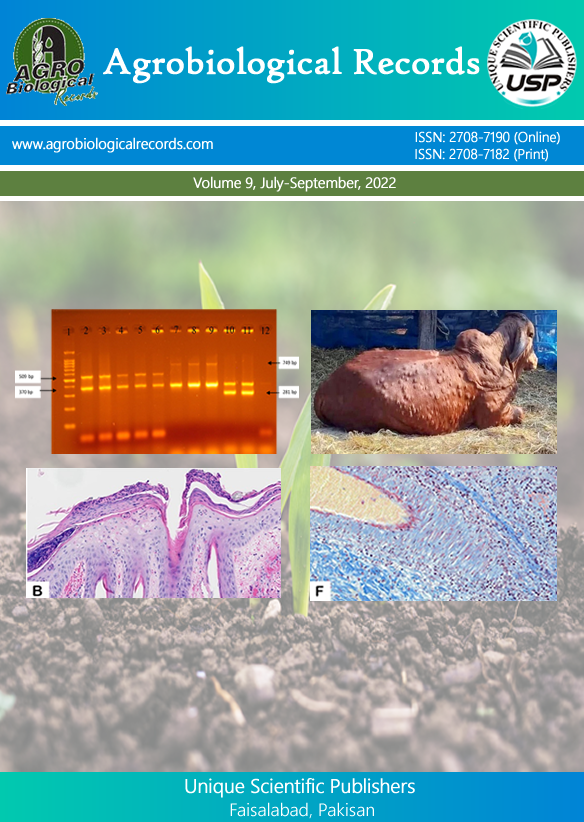
Muhammad Nadeem1, Muhammad Kasib Khan*,1 Muhammad Adnan Sabir Mughal1, Rao Zahid Abbas1, Muhammad Imran1, Zia ud Din Sindhu1, Arsalan Zafar1, Zaheer Abbas1, Tariq Jamil2, and Mehroz Latif3
1Department of Parasitology, University of Agriculture, Faisalabad, Pakistan 2Institute of Bacterial Infections and Zoonoses, Friedrich-Loeffler-Institut, Jena, Germany 3Faculty of Veterinary Science, Bahauddin Zakariya University, Multan, Pakistan
*Corresponding author: mkkhan@uaf.edu.pk
The commonly occurring haemoparasites in pigeons include Plasmodium, Leucocytozoon and Haemoproteus which cause decrease in production and performance of the birds. Due to the dearth of knowledge on prevalence of these parasites in pigeons in Pakistan, current survey-based study was planned to assess the prevalence of above-mentioned parasites in pigeons in selected rural areas of District Faisalabad, Punjab, Pakistan. The morphological identification of parasites was done under microscope by comparing it with standard keys. Out of 384 samples, 56.51% were found positive for haemoparasites. According to town-wise distribution, Jinnah town, Iqbal town, Madina town and Lyallpur town prevalence was 61.24, 48.86, 55.56, and 59.26%, respectively. According to genus-wise distribution, 48.14, 48.21, and 64.92% prevalence of mixed infection, genera Plasmodium/Haemoproteus and Leucocytozoon were observed, respectively. The prevalence was found high in female birds (65.9%) as compared to male birds (51.18%). The prevalence was higher in Cheena (69.02%) and Golden breeds (76.57%) as compared to Sialkoti (32.89%) and Dub wali (37.17%). The prevalence was found higher in squabs (74.15%) as compared to adults (49.6%) and growers (52.56%), in scavengers feeding pattern (77.31%) as compared to feeders (35.78%), and in open coop type (76.68%) as compared to closed coop type (36.12%). The values of Hb, PCV, and RBC’s count were lower, while WBC’s counts were higher in infected pigeons. The values of uric acid, creatinine, albumin and bilirubin were lower while gamma-glutamyl transferase (GGT), alanine transaminase (ALT), aspartate transaminase (AST) and glucose were higher in infested birds as compared to non-infected birds. The study indicated the impact of haemoparasites on the hematological parameters of the birds and the data generated could help in formulating effective control strategies against haemoparasites particularly Plasmodium, Leucocytozoon and Haemoproteus.